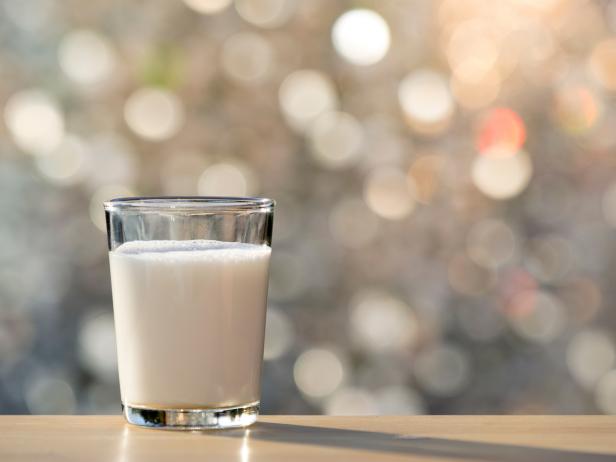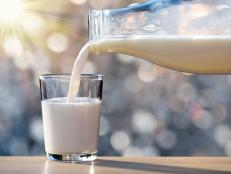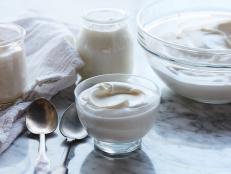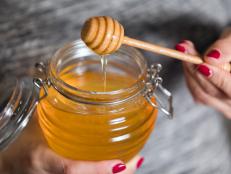Can Water Have More Calcium Than Milk?
This is the easiest dairy-free calcium solution.

Jose A. Bernat Bacete
You’ve heard it before — drink calcium-rich milk for strong bones and teeth. But, what if simply drinking water could help you meet (or exceed!) your daily need of calcium?
Enter mineral and spring water.
These specific waters come from either subterranean water sources (spring water) or deep subterranean reservoirs (mineral water) and are rich in many of the same minerals you get from food. Compared to purified water, which only has limited minerals left in the resulting product (total dissolved solids or TDS levels sit at a maximum of 40 milligrams per liter), spring and mineral water can have TDS levels as high as 7,400 milligrams per liter, which gives them their unique tastes and nutrition profiles.
The same minerals that contribute to the taste of spring and mineral water also supply health benefits. In Slovenia-sourced Roi water, for example, you get an incredible 510 milligrams of calcium per liter, which meets 39% of the daily value. To put this into perspective, one cup of whole milk provides 276 milligrams of calcium. But Roi does come with a hefty price tag of about $50 per bottle, says Los-Angeles-based leading certified water sommelier Martin Riese. Thankfully, cheaper options are available that also provide excellent amounts of calcium. French-sourced Contrex has 468 milligrams of calcium per liter, and German-sourced Gerolsteiner Sprudel has 345 milligrams per liter, which you can buy for less than $2 a bottle.
The benefits of these waters don’t stop there. Spring and mineral waters also typically provide magnesium, chloride and sodium and sometimes fluoride, potassium and additional minerals. In fact, a liter of Roi provides more than 100% of the daily value for magnesium, a mineral that helps everything from muscle and nerve function to potentially assisting with sleep.
In order to protect this water from contamination, most countries have rules that ensure water sources remain pure, according to the Encyclopedia of Food Sciences and Nutrition. Because the make-up of a particular mineral or spring water depends on the environment of where it’s sourced, each and every water around the world offers a completely different portfolio of minerals. What’s more, each mineral and spring water affects your taste buds differently. For example, some waters are naturally super-salty while others are naturally carbonated.
“Different types of water have different taste profiles based on the minerality and TDS,” says Riese. And spring and mineral waters taste different than purified water. “The chlorite and fluoride in purified tap water can sometimes produce an odor and leave a taste profile that doesn’t quite excite the taste buds,” says Riese. “Spring water, on the other hand, is part of the rain cycle, so it eventually seeps through layers of the earth where minerals from nature are infused into the water. Because each spring is unique, this leaves for more variety in taste profiles among different spring water brands — and for a taste that Mother Nature intended.” As with wine, you can pair water to create unique flavor profiles.
What about those other minerals in spring waters that you may have never heard of, such as silica (which may help be helpful to bone health)? “Due to the unique minerality from the grounds of FIJI, this specific water contains a high amount of silica," says Riese, a consultant with FIJI Water. “This gives FIJI Water its smooth and velvety, but lightly sweet, taste.” Other waters, such as Vichy Catalan, contain natural carbonation, an attribute that helps cut through the saltiness of certain dishes.
When it comes to drinking spring and mineral water, there are environmentally friendly ways to do so. Many water companies now allow you to buy large-format bottles or purchase reusable water bottles. Consider treating yourself to a bottle or two of spring or mineral water next time you’re in the grocery store. And when you travel, stop to taste the local spring water. You never know what health benefits you may gather!
Spring and Mineral Waters You Can Buy Now
Amy Gorin, MS, RDN, is a registered dietitian nutritionist and owner of Amy Gorin Nutrition in the New York City area. She’s a regular contributor to many publications, including EverydayHealth.com, ReadersDigest.com, NBCNews.com, and more. She also pens a recipe-focused blog, Amy’s Eat List, where she shares easy, healthy recipes. Connect with her on Instagram, Facebook, Twitter, and Pinterest.
Related Links:








































